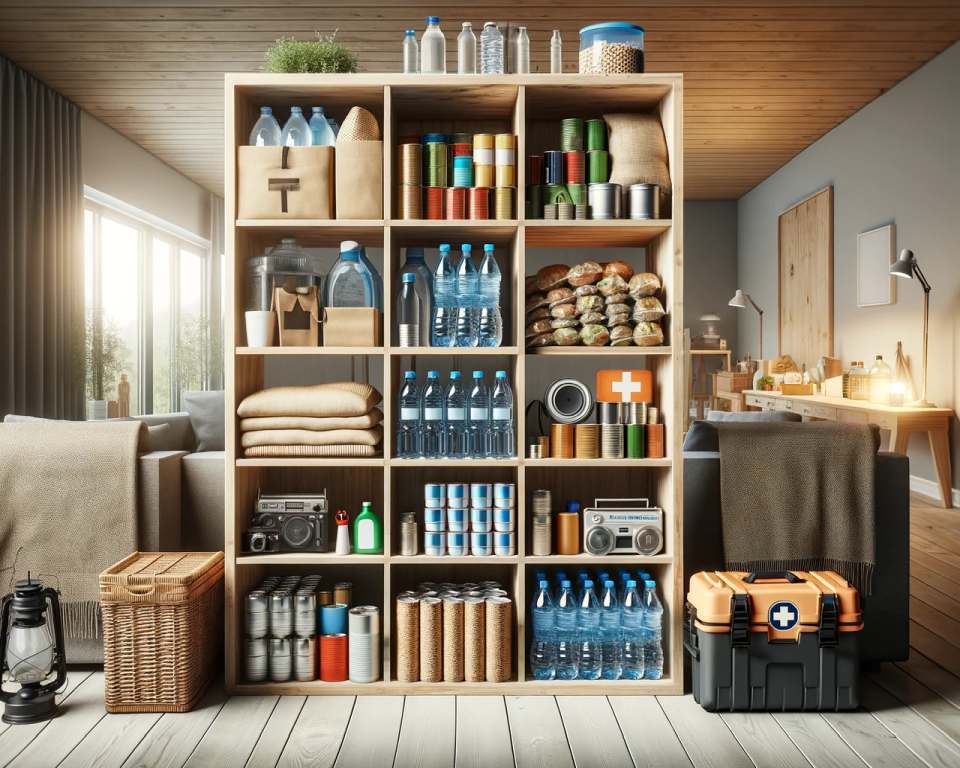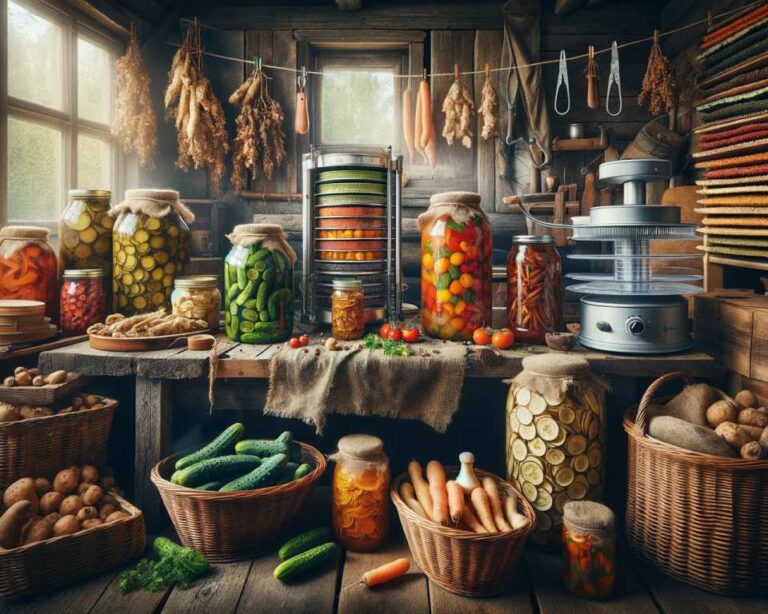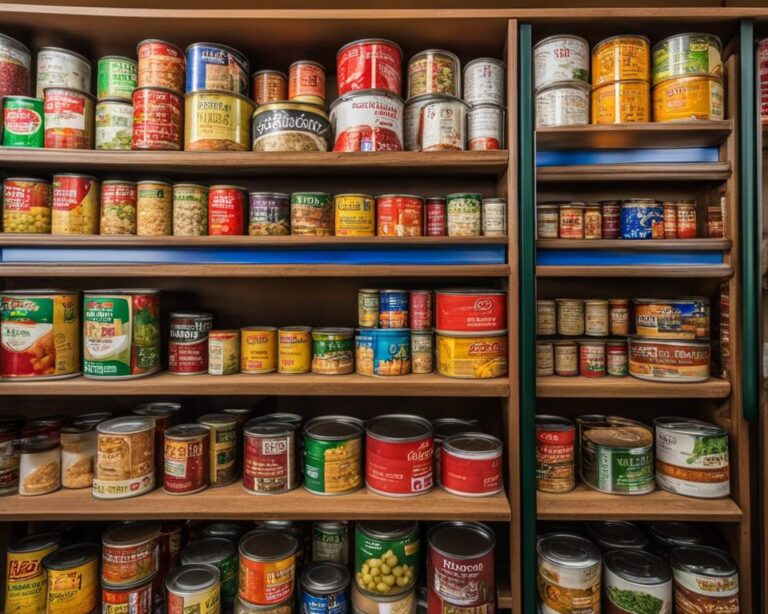The Basics of Prepper’s Stockpile: Building Your Emergency Supplies
Building an emergency stockpile is crucial for being prepared for unexpected emergencies such as natural disasters or disease outbreaks. It is recommended to have at least a three-day supply of food and water stored in your home, with additional supplies like flashlights, a manual can opener, a radio, and copies of important documents. Depending on your family’s needs, you may also need to include medical supplies, pet food, and other essentials. Storing your stockpile in a cool, dark place and keeping all the supplies together in an easily accessible container is important.
Key Takeaways:
- Create a three-day emergency stockpile with food, water, and essential supplies.
- Include items like flashlights, a manual can opener, a radio, and copies of important documents.
- Consider the specific needs of your family, including medical supplies and pet food.
- Store your stockpile in a cool, dark place and keep supplies together in an easily accessible container.
- Regularly check and replenish your stockpile to ensure freshness and usability.
The Importance of Emergency Food and Water Supplies
Having an adequate supply of emergency food supplies and emergency water supplies is essential for survival during an emergency situation. We never know when a disaster might strike, and being prepared with enough food and water can make all the difference. In times of crisis, access to grocery stores and clean water sources may be limited or completely cut off. That’s why it’s crucial to have a stockpile of essential items to sustain ourselves and our loved ones.
When it comes to emergency food supplies, it’s important to consider non-perishable options that don’t require refrigeration and are easy to prepare. Canned goods, ready-to-eat meals, and foods with a long shelf life should be included in your stockpile. These types of foods can provide important nutrition and calories during trying times. We may find ourselves without access to a stove or other cooking appliances, so it’s essential to have foods that can be eaten directly from the can or with minimal preparation.
As for emergency water supplies, it is recommended to have at least one gallon of water per person per day for drinking and sanitation purposes. Water is vital for staying hydrated and maintaining proper hygiene during emergencies. Having enough water stored ensures that we can meet our basic needs even if the regular supply is disrupted. It’s important to regularly check and replenish your water supply to ensure it remains clean and fresh.
Water storage should be done in a suitable container that is safe for storing drinking water. Look for containers specifically designed for long-term water storage that are made from food-grade materials. These containers should be kept in a cool and dark place to prevent the growth of bacteria and algae. It’s also a good idea to label your containers with the date of storage, so you know when it’s time to rotate and replace the water.
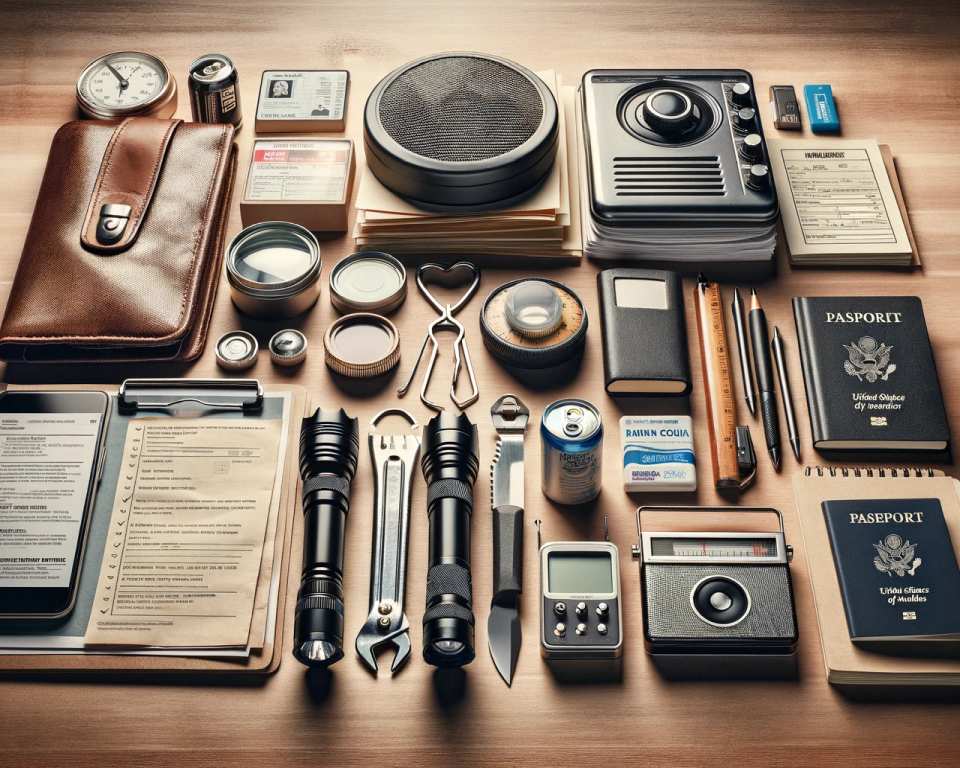
Essential Emergency Supplies for Your Stockpile
In addition to food and water, there are several other essential supplies that should be included in your emergency stockpile. These items will help you navigate through challenging situations and ensure the safety and well-being of your family.
Flashlights and Extra Batteries
Flashlights are invaluable during power outages or when moving through dark areas. Make sure to have multiple flashlights on hand, and always include extra batteries in your stockpile to ensure they are ready for use when needed.
Manual Can Opener
A manual can opener is a simple yet essential tool. It allows you to access the contents of canned foods, which can be an important source of nutrition during emergencies. Keep a reliable manual can opener in your stockpile to ensure you can open canned goods without relying on electricity or battery-powered appliances.
Battery-Operated or Hand-Cranked Radio
A battery-operated or hand-cranked radio is crucial for staying informed during emergencies. It allows you to receive important updates and instructions from authorities, keeping you and your family aware of the situation. Include a radio in your stockpile, along with extra batteries or a hand-cranked charging mechanism.
Copies of Important Documents
Make sure to have copies of important documents in your stockpile. These documents may include identification papers, insurance policies, medical records, and emergency contact information. Storing these copies can help you quickly access vital information during chaotic times.

Medical Supplies
Medical supplies tailored to your family’s specific needs are essential in your emergency stockpile. Include items such as bandages, antiseptic solutions, prescription medications, and any necessary medical equipment. Regularly check the expiration dates and replenish as needed to ensure their effectiveness when emergencies arise.
Pet Food
If you have pets, don’t forget to include extra pet food in your stockpile. Your furry friends rely on you for their nutrition, so it’s important to have an adequate supply of their specific food. Consider their dietary needs and adjust your stockpile accordingly to ensure their well-being during emergencies.
By including these essential emergency supplies in your stockpile, you’ll be better prepared to handle unexpected situations. Remember to periodically check and replenish your supplies to ensure they remain in good condition and ready for use when needed.
Tips for Storing Your Emergency Stockpile
Properly storing your emergency stockpile is crucial for ensuring its quality and usability when you need it most. Here are some important tips to consider:
Find a Cool and Dark Place
When choosing a location for your stockpile, opt for a cool and dark place. Heat and sunlight can accelerate the spoilage of food and the deterioration of other supplies. A basement, pantry, or spare room that maintains a relatively stable temperature is ideal.
Avoid Pest Infestations
Keep your stockpile safe from pests that can damage your supplies. Rodents, insects, and other critters are attracted to food and can quickly compromise your emergency stockpile. Store your supplies in sealed containers or bins to prevent access, and consider using pest deterrents such as traps or repellents.
Ensure Easy Accessibility
In an emergency, quick and easy access to your stockpile is essential. Store your supplies in an easily accessible location, preferably within reach and on a level that requires minimal effort to retrieve. This will save you valuable time and prevent unnecessary frustration during stressful situations.
Choose a Waterproof Container
Protect your emergency supplies from potential water damage by storing them in a tightly closed, waterproof container or plastic bin. This will prevent moisture from seeping in and compromising the quality of your stockpile. Additionally, it will keep your supplies safe in case of flooding or other water-related emergencies.
Keeping your emergency stockpile properly stored will ensure that it remains in good condition for an extended period, ready to support you and your loved ones in times of crisis.
Maintaining and Refreshing Your Stockpile
Regularly maintaining and refreshing your stockpile is crucial to ensure that your emergency supplies are always ready for use. By following a few simple steps, you can keep your stockpile up-to-date and ensure its effectiveness during times of crisis.
First and foremost, it is important to check the expiration dates on all your stockpile items, especially canned goods and other food items with limited shelf lives. By doing so, you can identify any expired or soon-to-expire items that need to be replaced. This step ensures that you have a fresh supply of food and other essentials when you need them most.
When replacing expired items, it is wise to rotate your supplies to maintain freshness. By using the older items first and adding new ones to the back of the stockpile, you ensure that nothing goes to waste. This practice also helps you stay organized and aware of your inventory, allowing you to easily identify which items need rejuvenating.
Refreshing your stockpile involves not only replacing expired items but also considering your evolving needs. As time goes by, you may discover that certain items are no longer necessary or relevant to your specific emergency preparedness plan. By periodically reevaluating your stockpile, you can remove any unnecessary or expired items and replace them with new essentials that better align with your current situation.
Additionally, it’s essential to periodically check the functionality of your emergency equipment, such as flashlights, radios, and other electronic devices. Test the batteries and ensure they are working properly to avoid any surprises during an emergency. This step reinforces your preparedness and ensures that you have reliable tools at your disposal when needed.
Remember, maintaining and refreshing your stockpile is an ongoing process. Regularly check expiration dates, rotate supplies, replace expired items, and refresh your stockpile with new essentials to ensure that you are always prepared for unexpected emergencies.
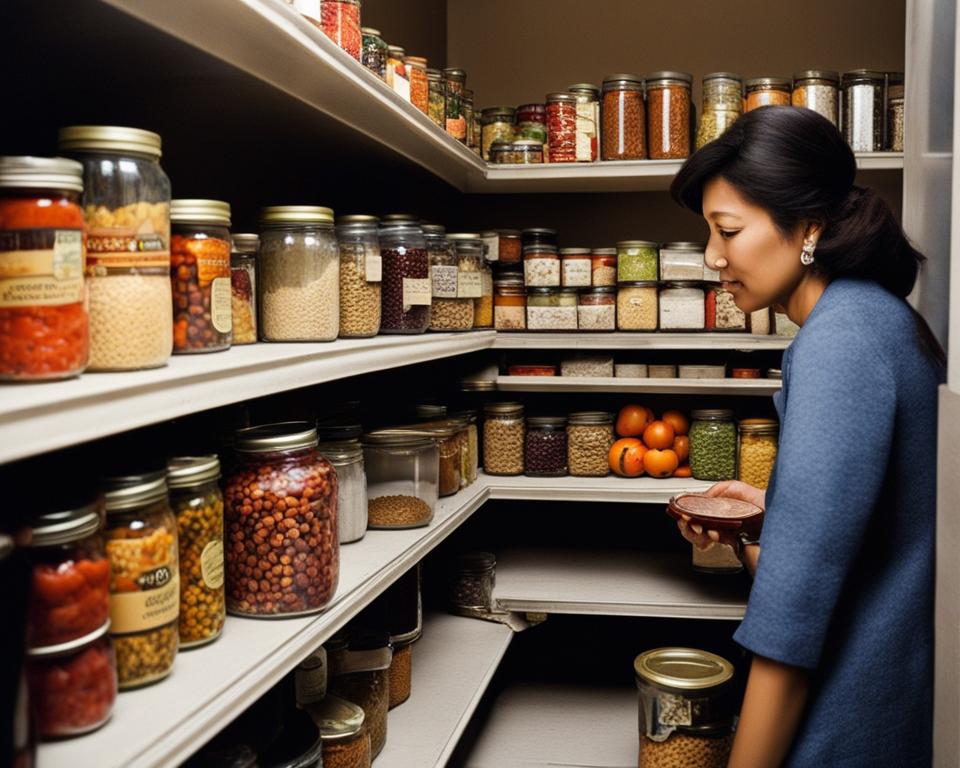
Creating a Two-Week Emergency Supply
If you want to be even more prepared, consider creating a two-week emergency supply of food and water. This will ensure that you have enough sustenance to weather an extended emergency or disaster situation.
When planning your two-week supply, focus on non-perishable foods that require minimal or no preparation. Stock up on canned goods, dried fruits, nuts, granola bars, and other long-lasting options. These foods can provide the energy and nutrition you need during challenging times.
It’s important to include a variety of foods in your stockpile to create nutritionally balanced meals. Include items from each food group, such as protein-rich canned beans or tuna, whole grains like crackers or cereal, and fruits and vegetables in the form of canned or dried options.
Don’t forget to consider dietary restrictions and allergies when selecting items for your emergency supply. Look for gluten-free, dairy-free, or nut-free options if needed.
In addition to food, remember to store enough water for each person for two weeks. The general rule of thumb is to have one gallon of water per person per day for drinking and sanitation purposes. Invest in sturdy, food-grade water containers that can be properly sealed to help preserve the quality of the water.
Properly label your emergency supply with the date of storage and regularly check the expiration dates of your non-perishable foods. Rotate your stockpile by using the oldest items first and replacing them with new ones. This will help ensure that your supply remains fresh and ready to use when needed.
By creating a two-week emergency supply, you will have peace of mind knowing that you and your loved ones are prepared for a longer-term emergency situation. Remember, being proactive in our preparedness allows us to focus on taking care of ourselves and supporting our community during challenging times.
Cooking and Eating During Power Outages
In the event of a power outage during an emergency situation, we need to have alternative methods for cooking and eating. It’s essential to be prepared for situations where we don’t have access to electricity or gas. Let’s explore some emergency cooking methods that can help us continue to prepare meals even without power.
One option for cooking without power is using a charcoal grill. These grills can provide high heat and are suitable for cooking a variety of foods. To use a charcoal grill, simply light the charcoal using lighter fluid or a chimney starter, and once the coals are hot and glowing, place your food on the grill grates. Remember to monitor the cooking process closely to prevent overcooking or burning.
Another alternative is a camp stove, which is specifically designed for outdoor cooking during camping trips. These stoves are portable and typically run on propane fuel. They offer a convenient cooking option during power outages and can be used to prepare meals efficiently. Just make sure to use the stove in a well-ventilated area to avoid the risk of carbon monoxide poisoning.
If you need to warm up already cooked food without power, candle warmers can be a viable option. These devices use a candle flame to provide gentle heat and can keep your food warm without the need for electricity. Place a heat-resistant dish or bowl on top of the candle warmer and place your pre-cooked food inside for safe and effective heating.
When using any of these emergency cooking methods, safety is of utmost importance. Always follow the manufacturer’s instructions and guidelines for proper usage. Additionally, remember to have enough fuel or charcoal on hand to last for an extended period. It’s essential to ensure that your emergency cooking equipment is in good working condition and that you have the necessary supplies to operate it safely.
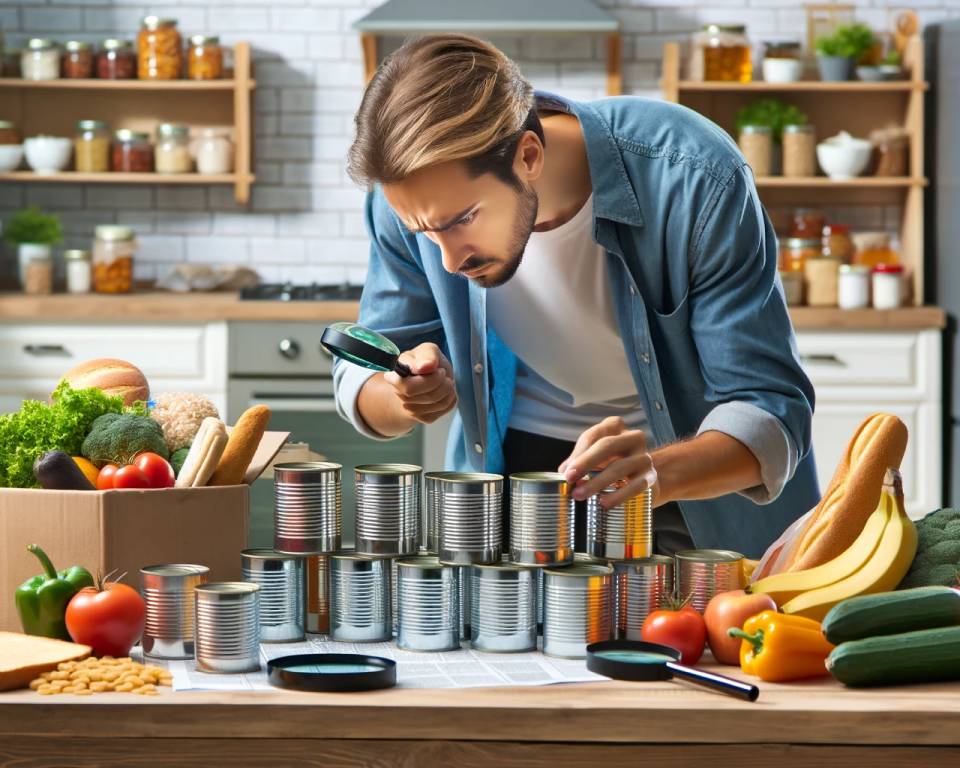
Checking and Maintaining Canned and Packaged Foods
Canned foods are a popular choice for emergency stockpiles due to their long shelf life. To ensure the safety and quality of your canned goods, it is essential to regularly inspect them for any signs of damage. Look out for bulging, leaking, or rusting containers, as these can indicate spoilage or bacterial growth. If you come across any damaged cans, it’s best to discard them immediately to avoid the risk of contamination.
In addition to visual inspection, it’s important to check the expiration dates on your canned goods. Most canned foods have a printed date on the label, indicating how long they can be safely consumed. If the expiration date is not visible, you can refer to general guidelines for the shelf life of different types of canned foods. It’s crucial to prioritize using products that are closest to expiry and replenishing your stockpile with fresh items as needed.
In the unfortunate event that your canned goods come into contact with floodwaters, it is crucial to take appropriate measures. Floodwaters can introduce harmful bacteria and contaminants, compromising the safety of the canned food. In such cases, it is recommended to discard all cans that have been submerged or come into contact with floodwaters. Prioritize the safety of you and your loved ones by disposing of these items.
Moreover, if you have canned goods that have been in a flood or any unsanitary conditions, it is important to clean and sanitize them before consumption. Thoroughly wash the cans with clean, warm water and mild soap to remove any dirt or debris. Afterward, sanitize the cans by soaking them in a solution of one tablespoon of bleach per gallon of water for at least one minute. Rinse the cans with clean water to remove any residual bleach before opening them.

